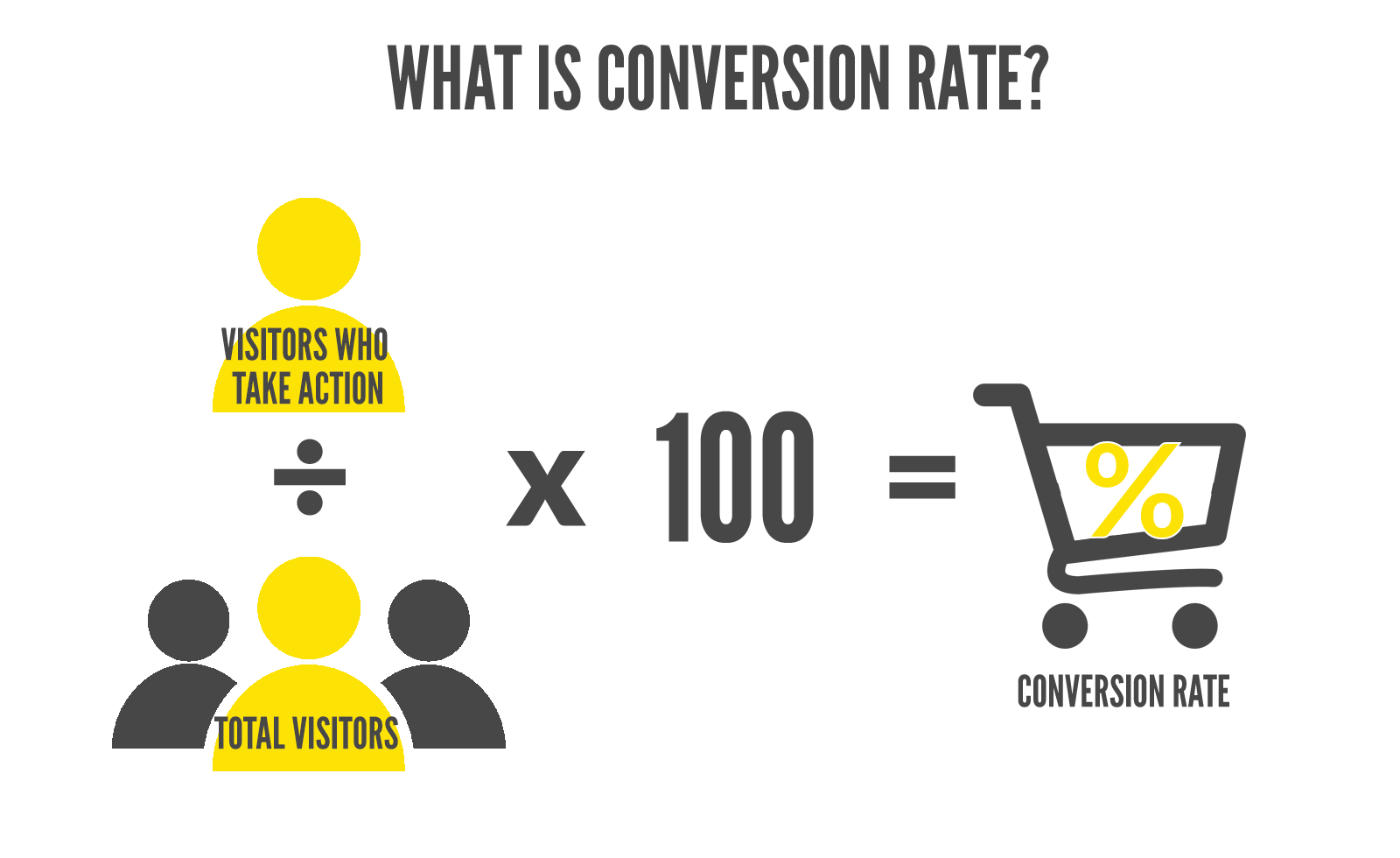
Contents
- What is conversion rate?
- Calculating the rate of conversion
- What qualifies a good conversion rate?
- Why conversion rate is vital?
- Conversion rate and return on investment
What is conversion rate?
The conversion rate is calculated as follows: clicks / actions. Your online marketing campaign will be more successful if your conversion rate is higher. If you want to grow your business through digital marketing, tracking the conversions of your marketing campaigns can help you refine your marketing strategies, increase the effectiveness of your content marketing, and better understand the behavior of cart abandoners from a Facebook advertising campaign. Additionally, by utilizing web analytics and conversion tracking tools such as Google Analytics, you can convert a higher percentage of your website visitors to customers.
The more conversions your site receives, the higher its conversion rate will be in general. The conversion rate expresses the percentage of users who converted as a percentage of all users who visited your site. Your content is more effective when it has a high conversion rate.
Calculating the rate of conversion
Calculating your conversion rate is straightforward. Simply divide the number of people who interact with a piece of content, such as an email or a page on your website, by the number of conversions.
Consider the following scenario: You recently sent an email campaign to 10,000 customers who have previously purchased from you informing them of the impending release of your new product. 500 of the 10,000 email recipients clicked through to the pre-order page. Your email’s ecommerce conversion rate is 500 divided by 10,000—5%.
What qualifies a good conversion rate?
Your conversion rate demonstrates the effectiveness of your public-facing content in no uncertain terms. If 6% of your website visitors subscribe to your newsletter or make a purchase, your website is 6% effective.
However, here’s the thing: That is quite good. According to conventional wisdom, a “good” conversion rate for a website should be between 2% and 5% across all industries. Conversion rates vary considerably more by industry.
Certain industries, such as industrial equipment, have websites that are extremely underperforming. Others, such as those selling electronics or business services, typically have higher conversion rates on average. Therefore, if you’re curious about where you fall, conduct some research and make certain you’re not comparing apples to automobiles.
Why conversion rate is vital?
To determine the effectiveness of your marketing efforts, you must first determine the number of people who respond to them. Conversion rate is one of the most useful and accurate metrics because it compares the number of customer responses to the total number of contacts.
Consider this: If you received 50 new subscribers to your mailing list last month, your natural reaction would be to celebrate and take the afternoon off.
You may wish to reconsider that response if you discover that those 50 came from a total of more than 50,000 visitors to your website. That’s a 1% conversion rate, which means you should begin tweaking your content immediately.
Conversion rate and return on investment
A high conversion rate equates to a high return on investment.
Assume you spend $2,000 per month on content that generates 20,000 readers and 500 click-throughs on average. Your conversion rate is now 2.5 percent. Additionally, you’ve spent approximately $4 on each of those conversions.
If, on the other hand, you manage to generate 800 click-throughs the following month, your conversion rate will increase to 4%. And if your budget remains constant at $2,000, each conversion costs only $2.50, down from $4 the previous month. You’re in a better position now that you’ve increased revenue without increasing spending.
On the other hand, if your conversion rate decreased, your ROI would decrease as well. Each conversion has increased in cost. If this occurs, it may be a sign that you need to alter your marketing strategy.





